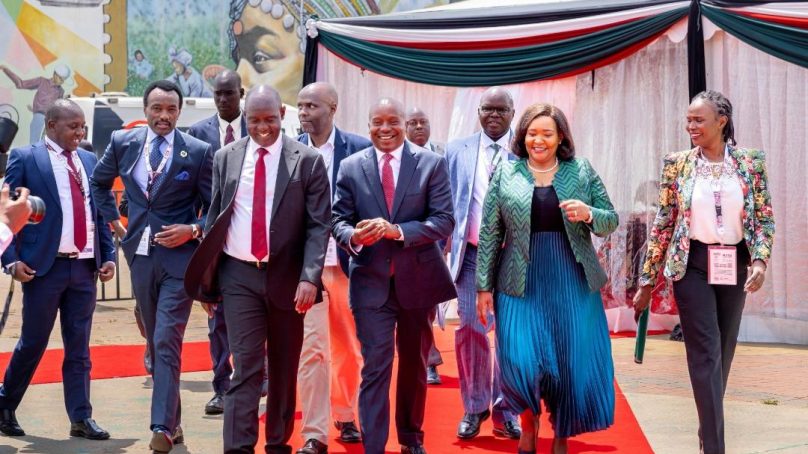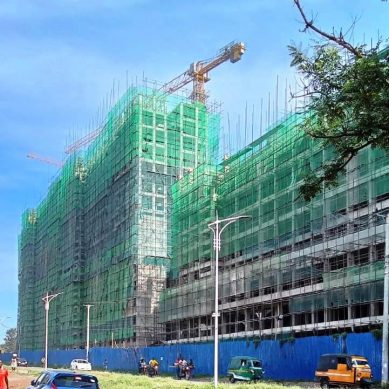
Kenya is seeking to harness intra-Africa tourism opportunities under the African Continental Free Trade Area (AfCFTA) to boost the sector’s contribution to the economy with a target of Ksh1 trillion ($780 billion) annually by 2027.
Deputy President Kithure Kindiki, speaking in Nairobi during the 15th Magical Kenya Travel Expo (MKTE) at Uhuru Gardens last week, said Kenya must leverage continental integration to achieve the double-digit tourism growth rates recorded in Asia and Europe.
“Tourism is a critical anchor of Kenya’s economy and a pillar of our Bottom-Up Economic Transformation Agenda (BETA). With Africa emerging as one of the strongest-performing regions in global tourism recovery, we must capitalise on AfCFTA opportunities. The sector must become a critical interlocutor in transport, logistics, trade, investment and MSMEs, driving synergised policy outcomes,” Prof Kindiki observed.
According to the World Travel and Tourism Council (WTTC), Kenya’s tourism sector is projected to contribute Ksh1.2 trillion ($930 billion) to the economy in 2025, representing more than 7 per cent of the Gross Domestic Product (GDP).
The industry is expected to sustain at least 1.7 million jobs, accounting for 8 per cent of national employment.
Kindiki highlighted infrastructure projects that include the Nairobi-Nakuru-Mau Summit Highway, expansion of the standard gauge railway, Lamu Port development and increased direct international flights as enablers of tourism growth.
He called for diversification, citing emerging products such as astro-tourism in Samburu, desert safaris in Chalbi and technology-driven tourism linked to Kenya’s Silicon Savannah.
“We must market the complete Kenya story – from our technological innovation to our athletic excellence, from the Cradle of Humankind to our over 40 vibrant communities,” he said, adding that the national tree-planting programme would strengthen eco-tourism while ensuring benefits reached local communities.
Tourism and Wildlife Cabinet Secretary Rebecca Miano said the expo had matured into a continental platform that not only markets destinations but also accelerates investment flows.
She confirmed that the government has set a target of Ksh1 trillion annual earnings from tourism by 2027.
“Infrastructure development through public-private partnerships remains our cornerstone strategy. By leveraging private sector expertise and government support, we are building world-class facilities that enhance visitor experiences while creating sustainable employment across the tourism value chain,” she stated.
Miano noted that the sector earned Ksh452 billion in 2024, from 2.4 million international arrivals, with domestic tourism generating over 10 million bed nights annually.
She outlined three priorities: attracting investment in facilities, scaling up global marketing and capacity building to sustain service standards. She said recent reforms, including visa openness and liberalized air access, had made Kenya one of the most accessible destinations in Africa.
“The electronic travel authorisation (ETA) now exempts all African countries and simplifies access for global travellers. Visitors can secure approvals within 72 hours. Combined with increased flights into Nairobi and Mombasa, this ensures seamless connectivity,” she explained.
Tourism Principal Secretary John Lekakeny Ololtuaa said the government is committed to easing travel, expand regional air connectivity and attract more investors.
“Affordable and reliable air connectivity is central to intra-African tourism. Kenya Airways and other carriers are already enhancing routes, but we must expand direct flights across Africa to grow tourism,” he said.
He also underscored Kenya’s interest in harmonised classification standards, cross-border tourism initiatives and joint marketing across the East African region.
“Tourism is not just about attractions and culture; it is also an investment sector. Kenya has friendly policies that welcome investors in hotels, camps, transport and tour companies. We must ensure cross-border collaboration to unify tourism standards and unlock new opportunities,” Ololtuaa added.
The PS said mapping of national tourist attractions was underway to diversify Kenya’s portfolio, including astro-tourism, cultural festivals and creative economy integration.
“We launched astro-tourism in Samburu during the lunar eclipse last month. With minimal light pollution, the area offers one of the best cosmic viewing experiences in the world,” he noted.
Director of Trade in Services, Investment and Digital Trade at the AfCFTA Secretariat, Emily Mburu, emphasised that tourism demonstrates how integration benefits African economies.
“Tourism shows how AfCFTA works in practice. Public-private frameworks attract FDI, build world class infrastructure and create employment across borders. When tourists move seamlessly across Africa, they activate supply chains, stimulate trade and prove that integration delivers immediate benefits to African economies,” Mburu said.
The expo has drawn over 6,500 delegates from 40 countries, including 400 exhibitors and 200 international buyers. More than 10,000 pre-arranged B2B meetings are scheduled, alongside familiarization trips and digital matchmaking sessions.
Africa accounted for 40.8 per cent of Kenya’s international visitors in 2024, making it the leading tourism source market. Officials said AfCFTA will strengthen this growth by easing travel, unlocking investment and creating jobs.
With tourism already employing 80 per cent of youth in hospitality, leaders at the expo expressed optimism that Kenya and Africa are on the cusp of a tourism-driven transformation.
“Tourism brings nations together, and this expo proves that Africa is ready to take its place as the world’s next great tourism frontier,” said Ololtuaa. A Tell Media / KNA report / By Naif Rashid







